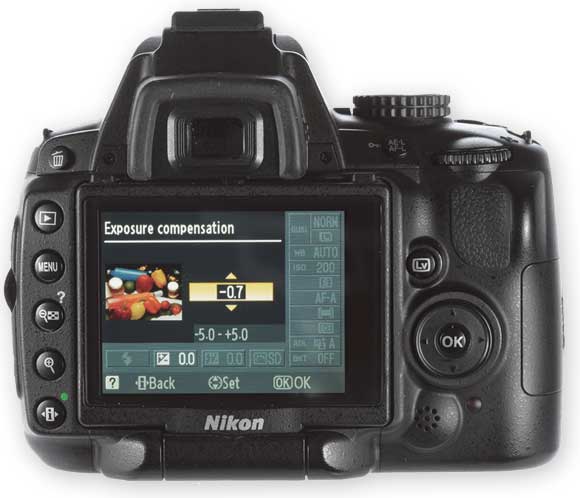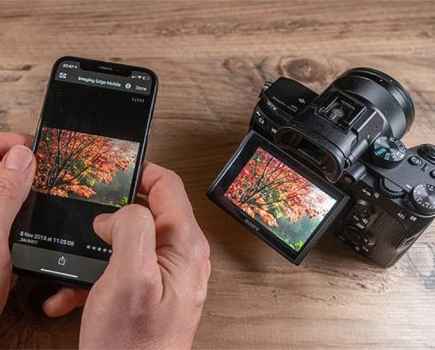
Metering is something most of us probably take for granted in modern cameras but it is essential for every single shot you take, whether you’re shooting in full Auto mode or completely manual.
The metering system measures the light entering the camera – through the lens (TTL) in the case of digital SLRs – and it then translates this information into relative shutter values, aperture values or stops. So when exposing manually you can use the digital reading to match what the light meter deems is well exposed; or when shooting in Auto it will provide the camera with the information to select the appropriate shutter speed and aperture values.
When it comes to making a camera, and to testing it, the metering system is as much an integral part as the focusing, processor and sensor. Each camera manufacturer has its own unique metering system and strives to achieve better ways of evaluating the light coming through the lens.
Most cameras will provide you with a choice of exposure modes for your metering as, although the system is clever enough to work out how to expose the image, it cannot predict if you want to get creative with your exposure or bring detail out of certain areas. When there is high contrast in the scene or strong backlighting, the metering system is forced to choose between shadow and highlight areas, as the dynamic range of the sensor cannot record to the same extremes that we can see with the naked eye. By changing the metering mode, you can choose whether you meter universally from the scene, give priority to certain areas, or simply select an area of the scene.
 Exposure Compensation
Exposure Compensation
Metering is only a guide for exposure as, in most cases, it will tell you the exposure needed to achieve the most even range of tones. But for creative shots this may not be what you require, and in some cases a balanced range can leave some areas over or under exposed that may be important to your shot. On these occasions it may be possible to adjust your metering mode to one more suitable, or even switch to fully manual and override its suggestions.
However, a much quicker method is often to use exposure compensation. This allows you to dial in a positive or negative value in stops, in relation to the given metering. Using the instant results from the LCD screen, it is easy to quickly access your image and make adjustments based on what you see.
Metering Explained – Evaluative/Multi-zone
This is the metering system at its most inventive and in full swing. The name can vary between manufacturers but is commonly known as Evaluative, Matrix or Multi-zone metering. For this the camera uses the entire image to determine the exposure. Primitive systems would just have taken a straight average, but today’s advanced systems break the image down into smaller sections (or zones) and combine this information to make a more informed choice as to the exposure.
This means that it can detect which areas are likely to be the most important and which to ignore for the exposure, so even with the sun directly in your image the camera can avoid making everything else too dark. Evaluative mode is the best selection for the majority of your images, and only for extreme cases, difficult lighting or specific effects should you ever need to stray too far from it.

Metering Explained – Centre-Weighted
Centre-weighted metering is a viable alternative to the evaluative option as it also uses the whole of the scene to meter but, as the name suggests, places a greater weighting to the light coming from the central area. It is the second most common mode, behind evaluative, to feature in any metering selection and makes use of the same sections of the image as the evaluative mode does.
Centre-weighted metering is often preferred by those wanting to photograph a particular thing, rather than the scene as a whole, and can work well for photographing people or objects in a scene, where the subject is the focus but you also want to show its surroundings.
Alternatively it can be useful when you have a particularly bright sky that could otherwise silhouette your subject, or for photographing a group of people in a scene.
Metering Explained – Spot Metering

If your subject is the only thing that matters, or you are dealing with extreme contrast or backlighting, use spot metering. This mode allows you to specify a very small area of the image, typically between 3% and 5%, which makes it ideal when the exposure is critical on certain parts of your image. Spot metering is very popular with portrait photographers who are looking to concentrate on skin tones. It can also be effective for wildlife shots of a subject in the undergrowth.
Spot metering is also suited to bright subjects such as the moon when you want to bring out its detail. The spot metering zone is an important ingredient to the evaluative and centre-weighted mix.
Metering Explained – Partial Metering
Partial metering offers a larger area than the spot (10-15%), taking in surrounding zones to form a central area, without including the rest of the image. This is a mid-way stage between the centre-weighted and spot options, and is ideal when it’s the edges of your image that could cause your metering system some problems. Not all cameras feature this mode, as similar effects can often be achieved using either the spot or centre-weighted options with a degree of exposure compensation to correct if necessary.








